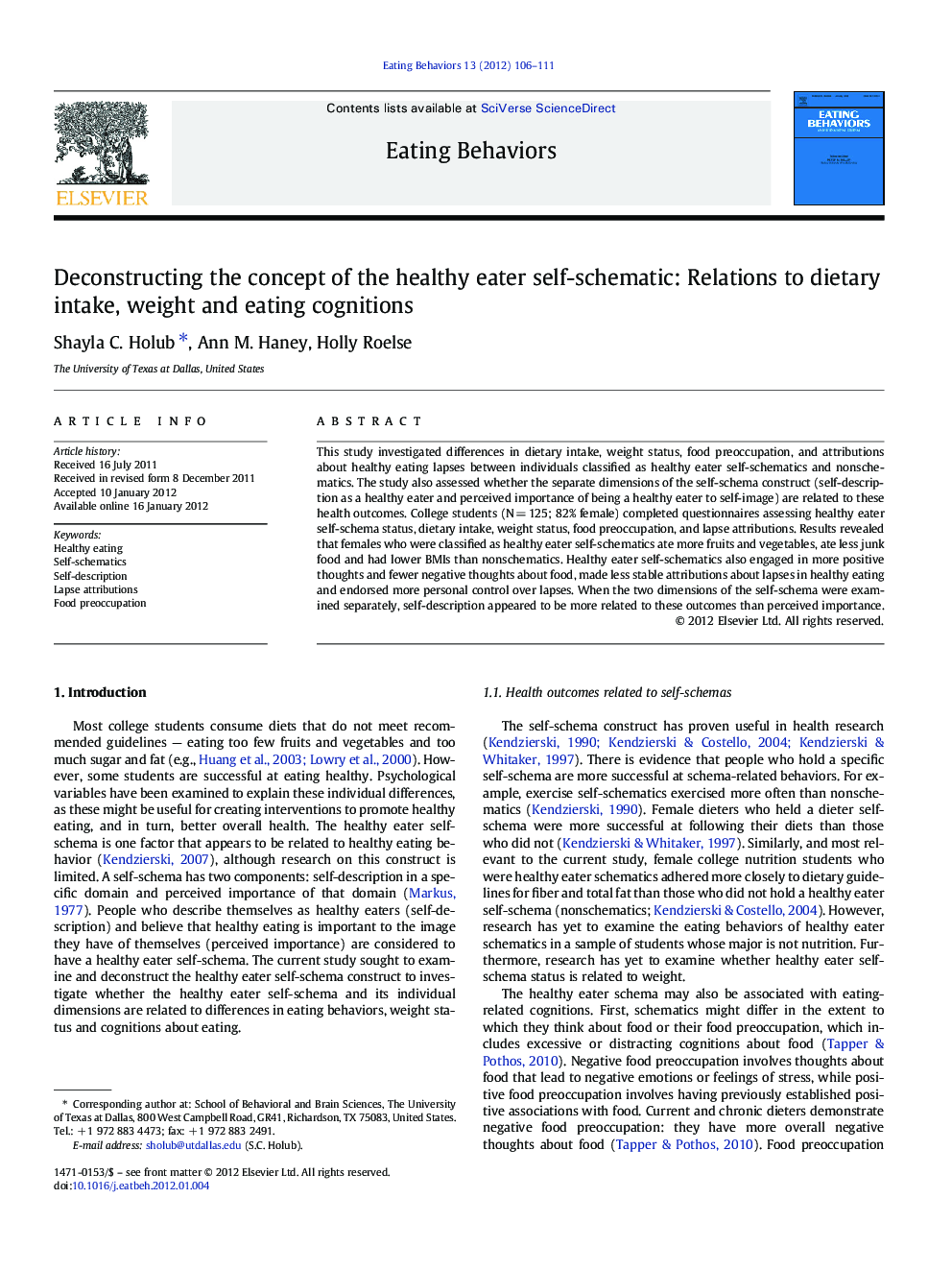| Article ID | Journal | Published Year | Pages | File Type |
|---|---|---|---|---|
| 906686 | Eating Behaviors | 2012 | 6 Pages |
This study investigated differences in dietary intake, weight status, food preoccupation, and attributions about healthy eating lapses between individuals classified as healthy eater self-schematics and nonschematics. The study also assessed whether the separate dimensions of the self-schema construct (self-description as a healthy eater and perceived importance of being a healthy eater to self-image) are related to these health outcomes. College students (N = 125; 82% female) completed questionnaires assessing healthy eater self-schema status, dietary intake, weight status, food preoccupation, and lapse attributions. Results revealed that females who were classified as healthy eater self-schematics ate more fruits and vegetables, ate less junk food and had lower BMIs than nonschematics. Healthy eater self-schematics also engaged in more positive thoughts and fewer negative thoughts about food, made less stable attributions about lapses in healthy eating and endorsed more personal control over lapses. When the two dimensions of the self-schema were examined separately, self-description appeared to be more related to these outcomes than perceived importance.
►Healthy eater schematics ate more fruits/vegetables and less junk food. ►Healthy eater schematics reported less negative and more positive food preoccupation. ►Healthy eater schematics made less stable attributions about healthy eating lapses. ►Healthy eater schematics reported personal control over healthy eating lapses. ►Self-description was related to more outcomes than perceived importance.
